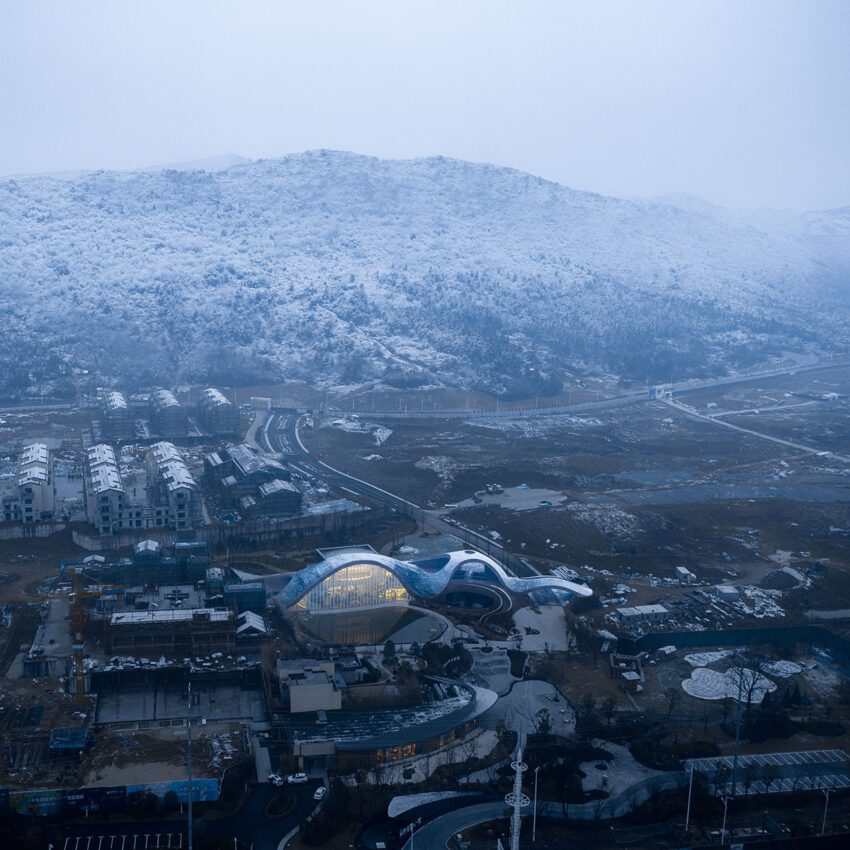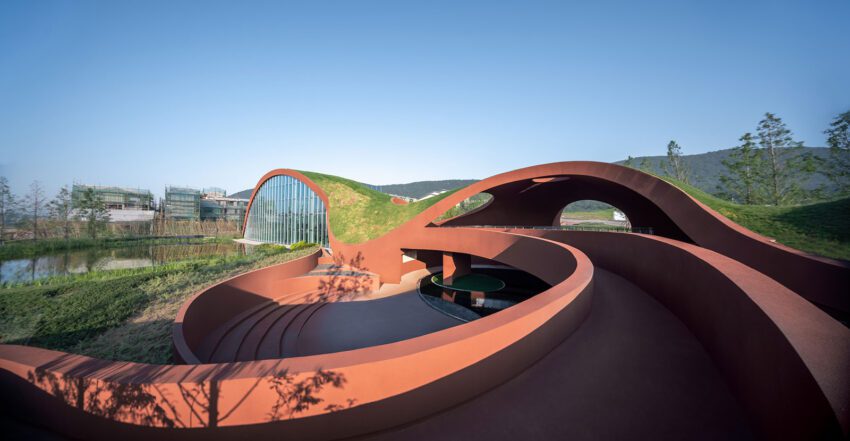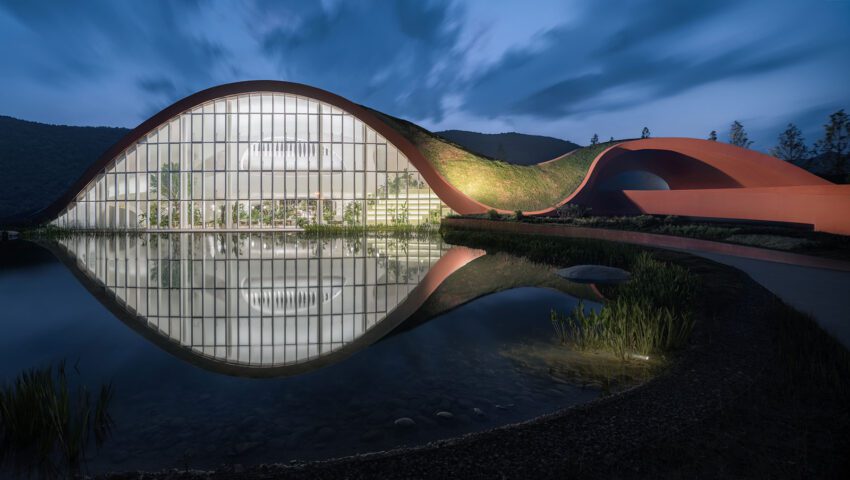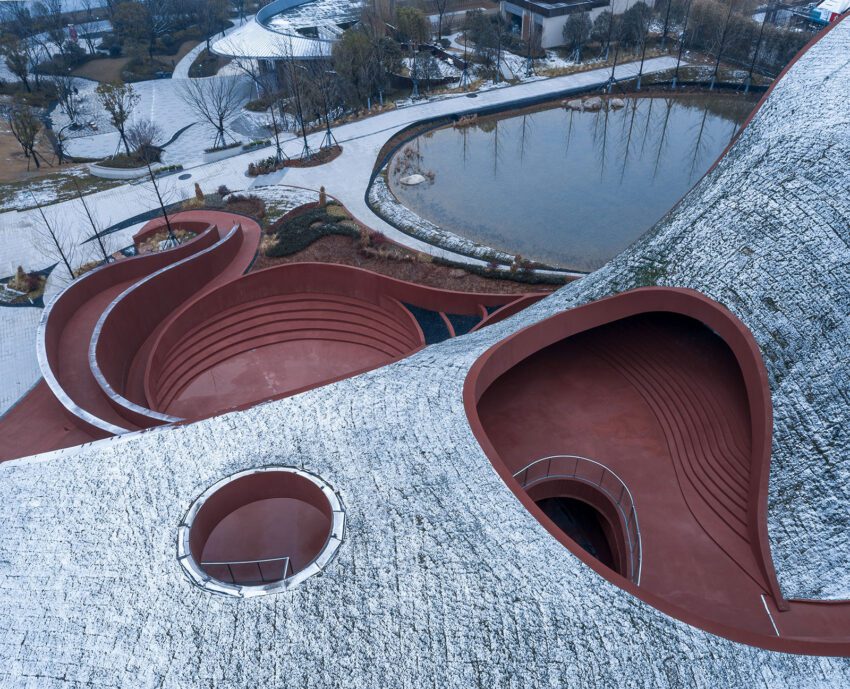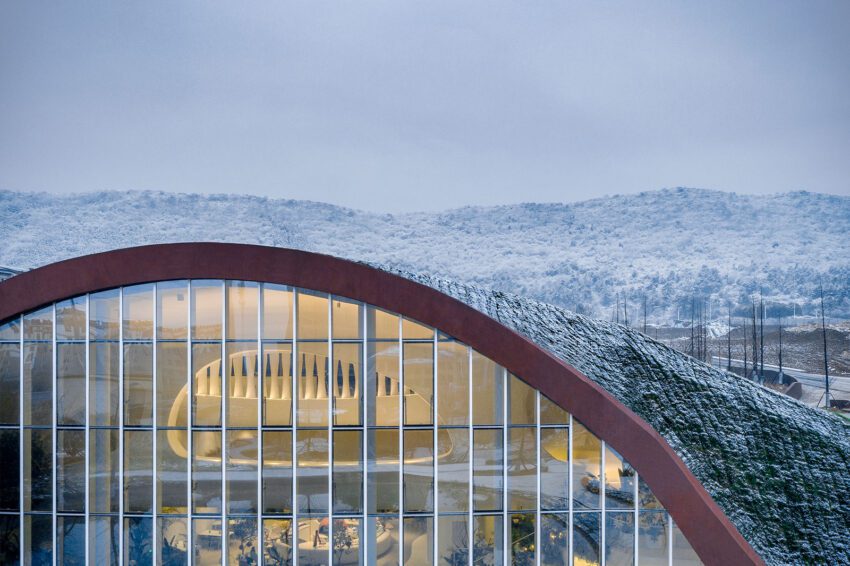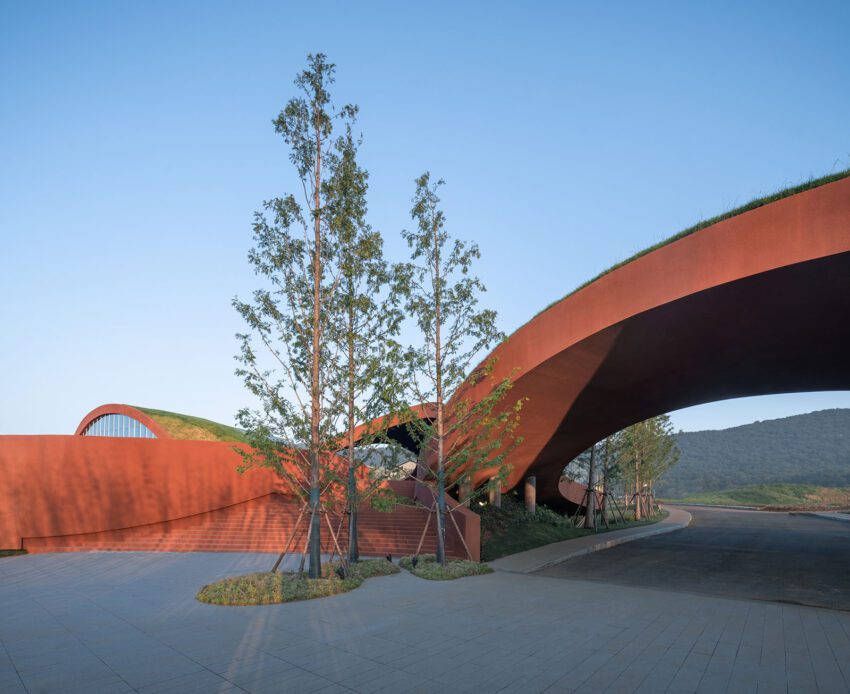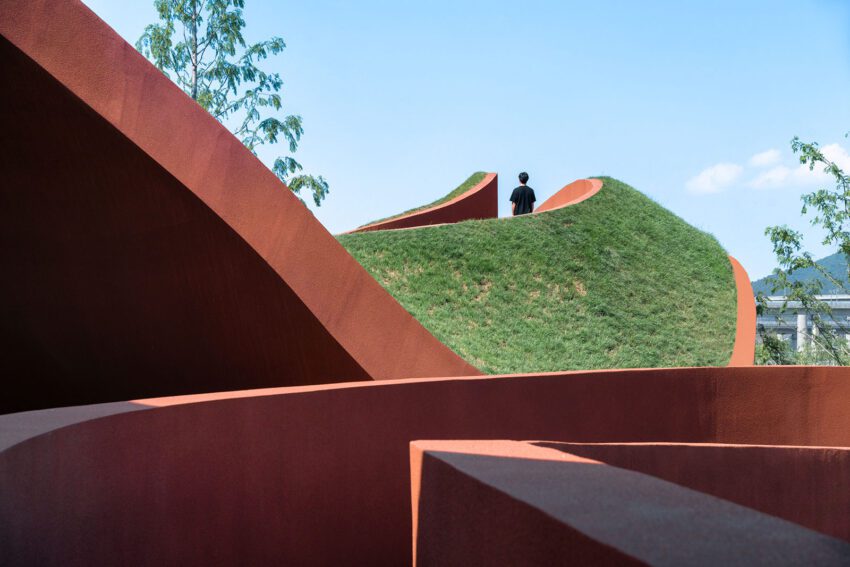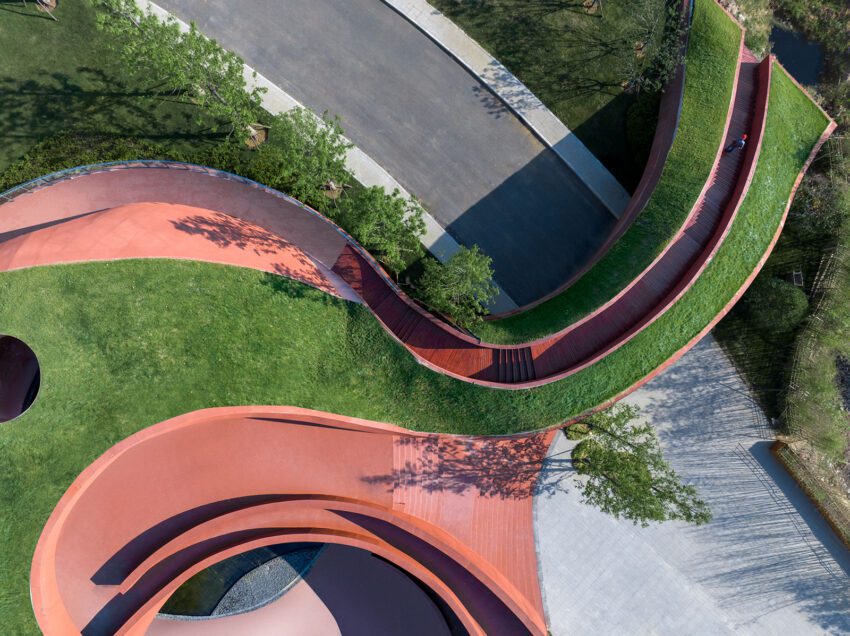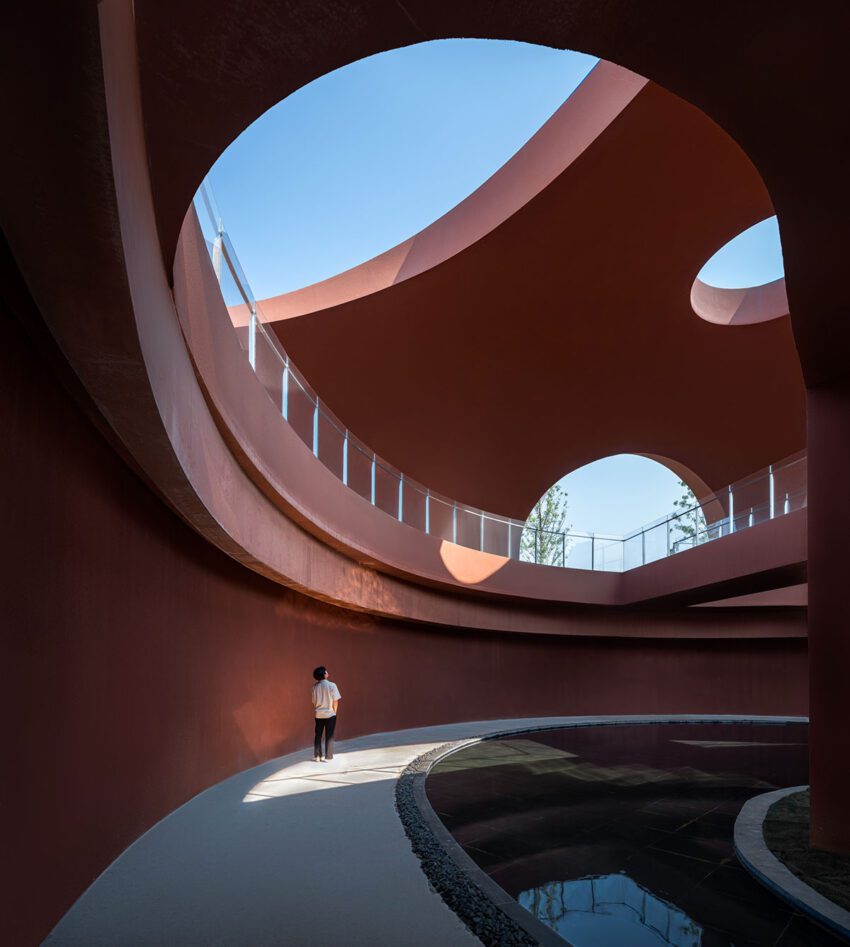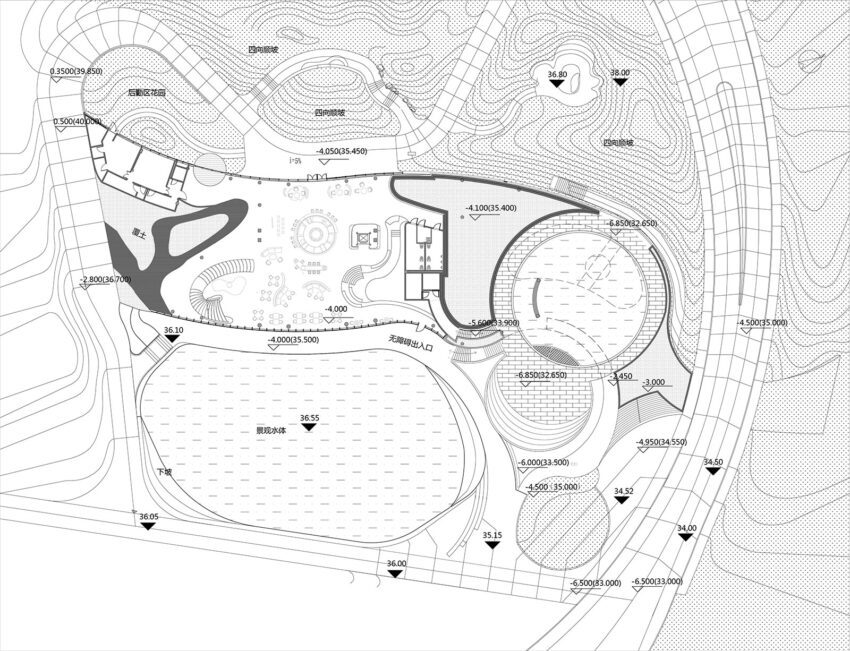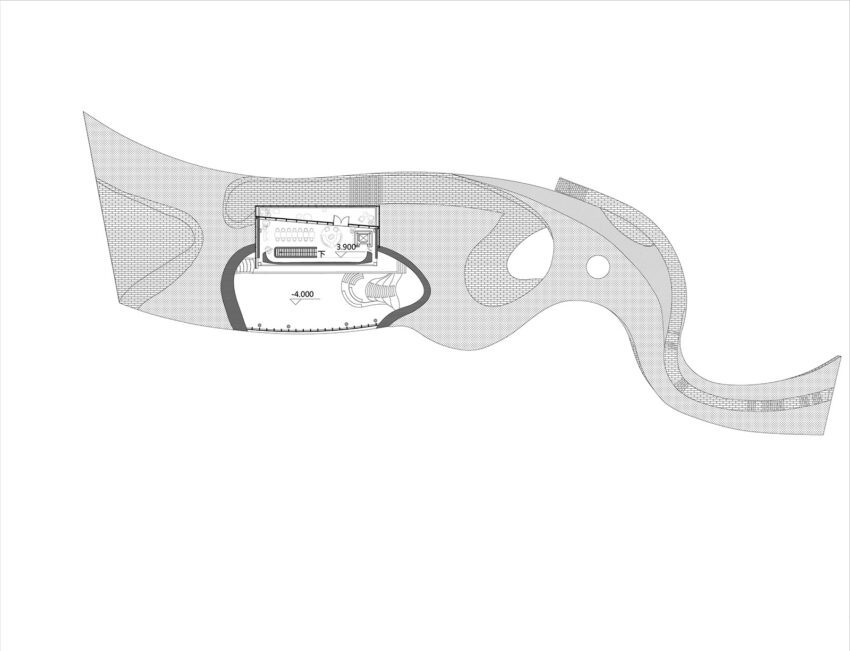The OCT Chaohu Natural and Cultural Centre is situated at the base of a mountain range that runs for several kilometers from northeast to southwest on the northern outskirts of Chaohu city. This unique location allows the center to serve as a bridge between the city’s urban environment and its natural surroundings.
The architecture of the building is designed to showcase the local cultural heritage and provide a space for future recreational activities in the city. As a result, the center is a fusion of the past and future, creating an environment that is both historically rich and poised for new experiences.
OCT Chaohu Natural and Cultural Centre Technical Information
- Architects: Change Architects
- Location: Chaohu city, China
- Client: OCT East China Group, OCT Hefei Huanchao cultural and Tourism Real Estate Development Co., Ltd.
- Topics: Organic Architecture
- Area: 1500 m2
- Project Year: 2019 – 2022
- Photographs: © Wu Qingshan
The overall plans and elevations of the building are projected by the external shape of the mountain and the earth contour.
– Change Architects
OCT Chaohu Natural and Cultural Centre Photographs
An Overview of the OCT Chaohu Natural and Cultural Centre
The OCT Chaohu Natural and Cultural Centre is a unique architectural building that embodies the natural elements of its surrounding environment. The concept behind the building is rooted in nature, where the architects aimed to incorporate the background of the mountain, vegetation, and geological context into the building’s design. As a result, the building serves as a carrier for light and shadow, rain and snow, and air, allowing citizens to experience the self-shaping space of the natural elements.
The plans and elevations of the building reflect the external shape of the mountain and the earth’s contour. The architects employed their imaginative skills to create wormholes on the building, which serve as the boundary between the inside and outside. These wormholes, shaped by a wiggly worm, also form the location of the viewing platform.
The building’s design incorporates the topography and relationship with the surrounding environment, offering an authentic spatial effect. The structure of the building is made of steel to ensure speed and controllability during construction. The roof and the bottom of the structure layer use a combination of in-situ pouring and G.R.C. hanging boards. The architects used planting roofs and spraying lightweight concrete to shape the upper and lower veneer layers after the foundation level was completed. These two methods offer a better match with the streamlined shape, reducing the tolerance for accuracy.
The building’s roof features various anti-skid treatments, including large mesh anti-skid partitions for gentle slopes and dense hole partitions for steeper slopes. The anti-skid partitions are filled with 50mm of formula soil to ensure the survival of the roof vegetation.
OCT Chaohu Natural and Cultural Centre Plans
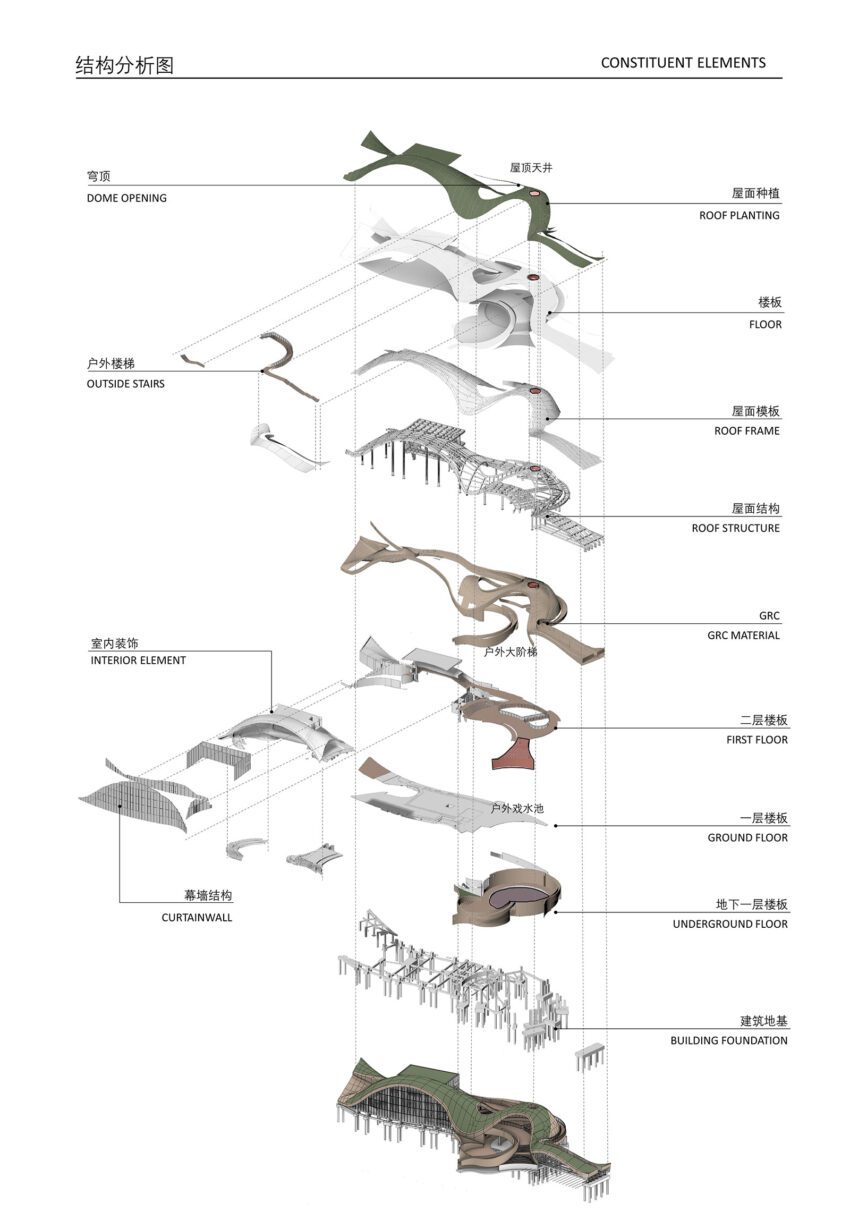
OCT Chaohu Natural and Cultural Centre Image Gallery
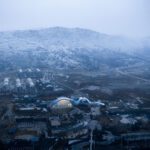

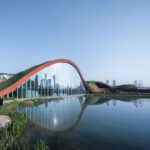
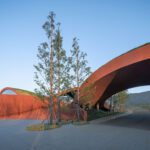
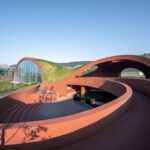
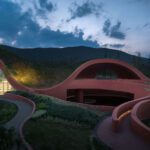
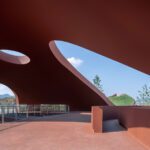
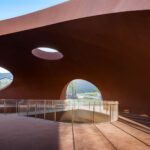
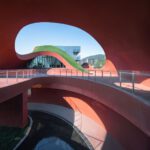
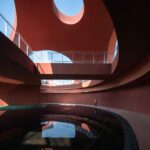
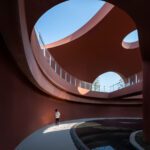
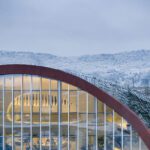
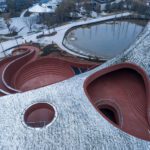

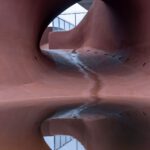
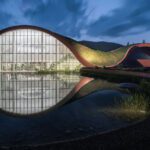
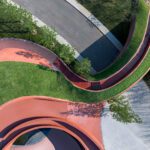
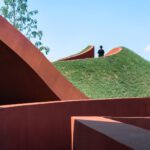
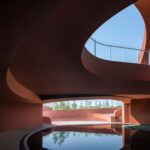

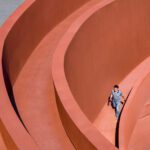
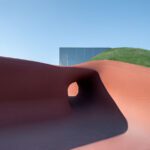


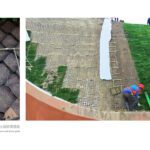
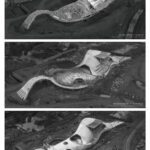
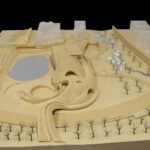





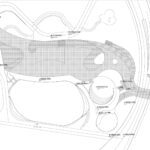

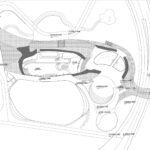

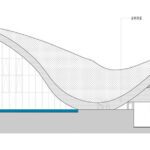
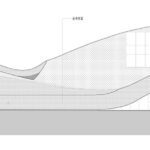

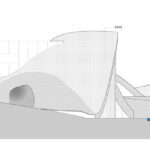
- Design Team: Jiang Qiu, Zhou Yangyang, Shi Chen, Li Baona, Hou Xiaomeng, Jin Xiaoli, Bian Keming, Hao Ziting
- Local Design Institute: Anhui Architectural Design and Research Institute Co., Ltd.
- Landscape Designer: Masters’Architectural Office (M.A.O.)
- Structural Engineer: Anhui Fuhuang Construction Co., Ltd
- Interior Designer: Ipoletz Architectural Consulting Services (Shanghai) Co., Ltd. IFGROUP (Germany)
- Architectural Creativity and Design Consultant Architects: Cai Sheng, HAN SONGLI, Yin Wenjun, Hao Xingyu, Qian Jun
- Structure Consultant: Shanghai Wilderness Structural Des. Firm Inc.(General Partnership)
- Structure Designer: Zhang Yewei
- Curtain Wall Consultant: Shanghai Xima Curtain Wall Engineering Consulting Co., Ltd.
- Lighting Design Consultant: Jiehan Lighting Design Consulting (Shanghai) Co., Ltd.
- Logo Design Consultant: Beijing Tushi Space Creative Design Co., Ltd.
- FF&E Consultant: Shanghai KEYI Architectural Design Co., Ltd. (KOYI)

